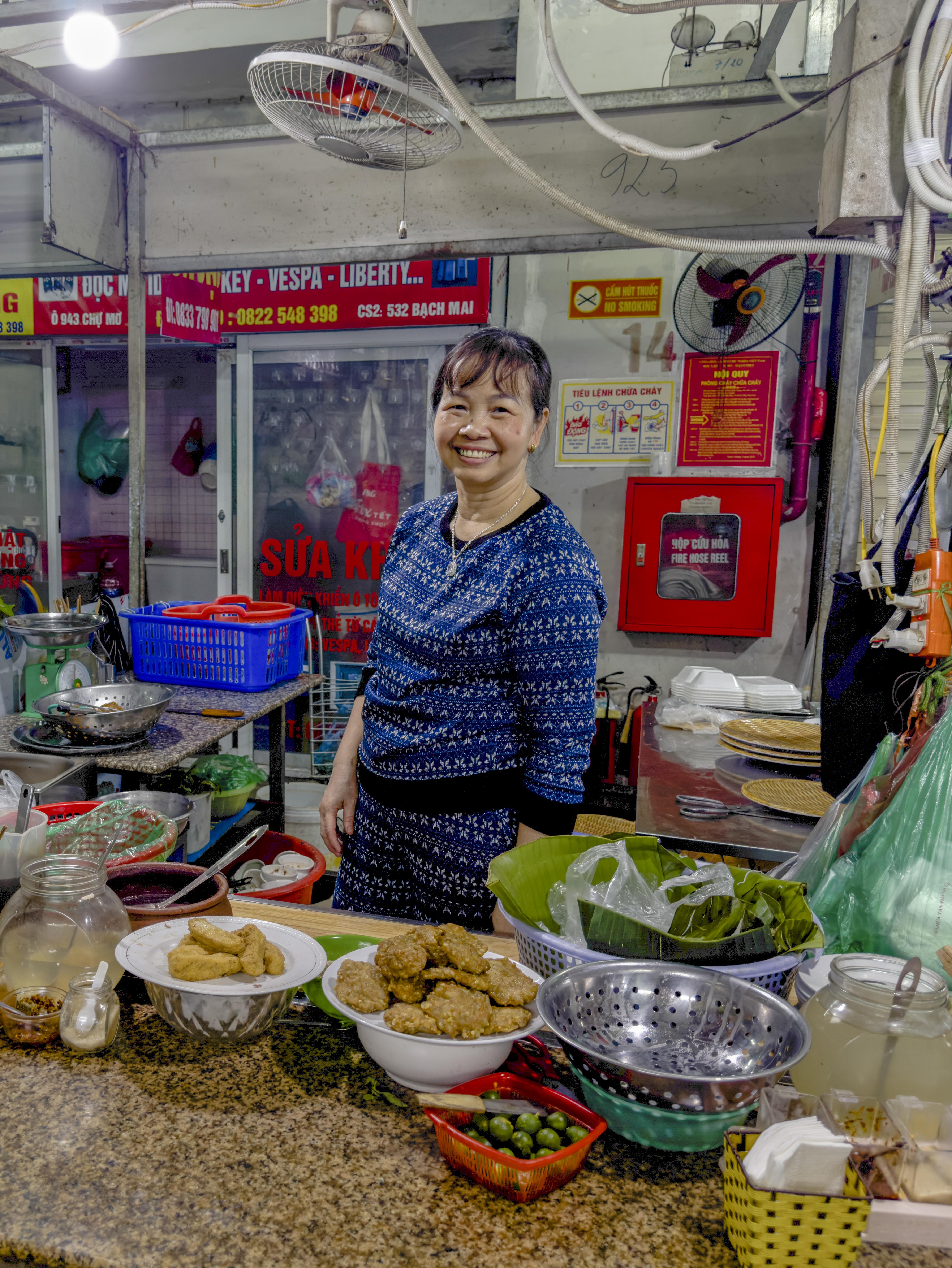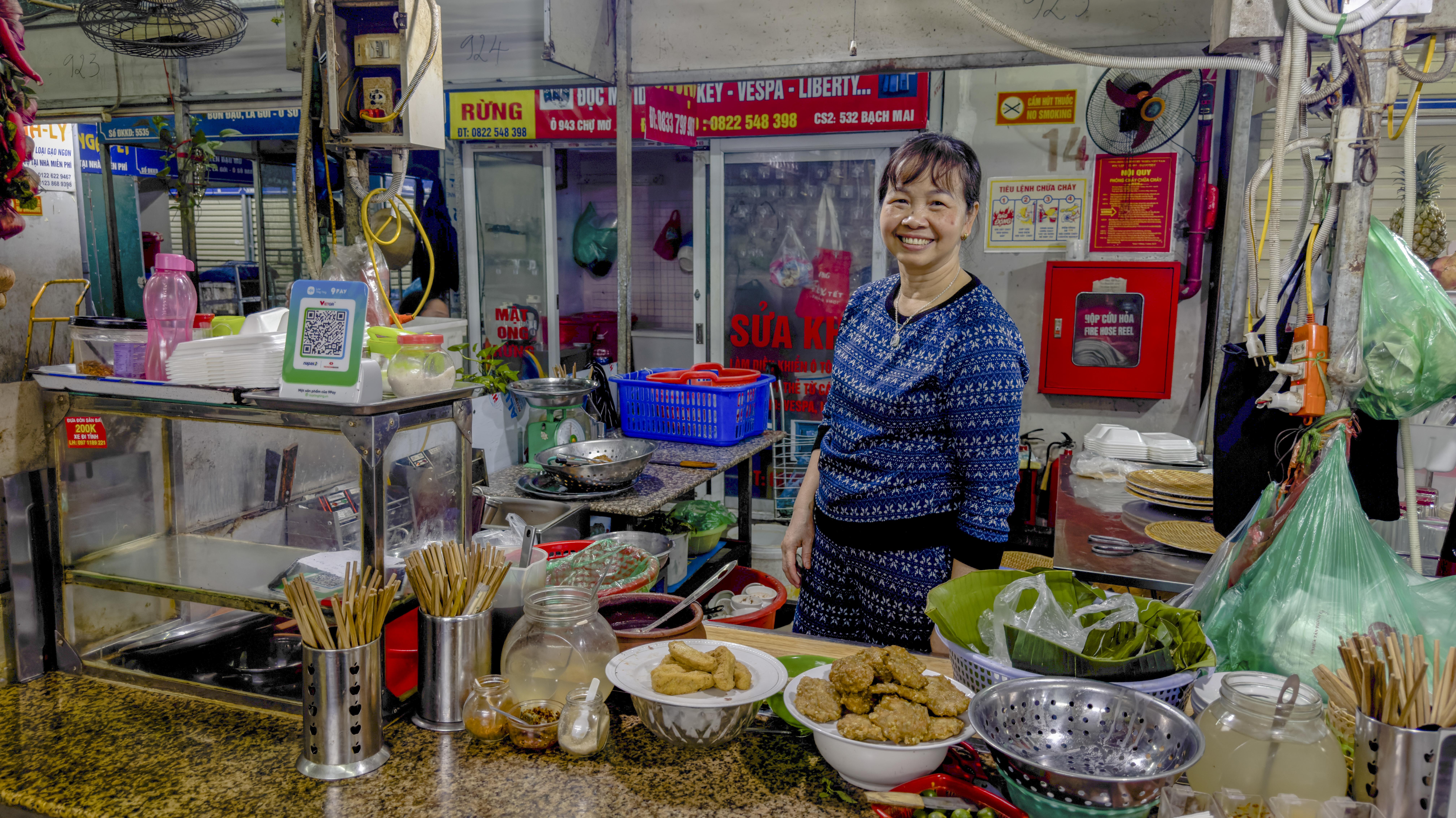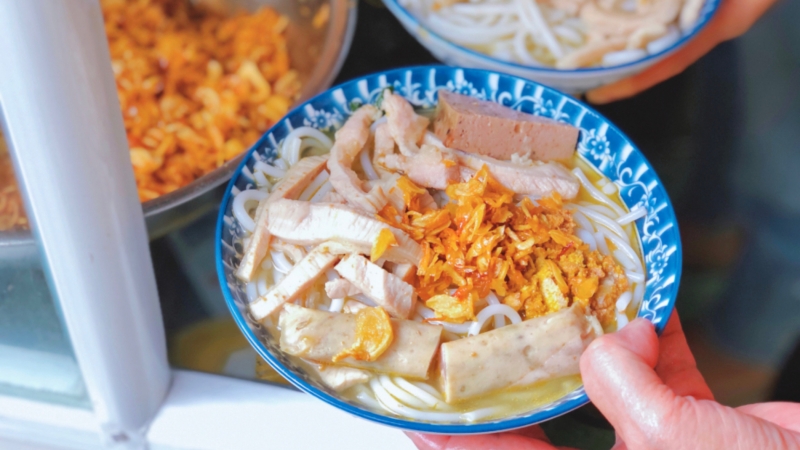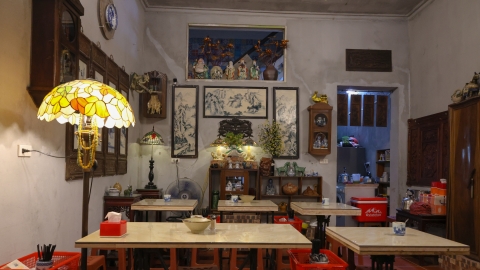According to historical records, Cho Mo has existed since the 13th-14th century, in the Ke Mo area south of Thang Long citadel. This land was named after the apricot tree - also known as apricot - which people planted a lot for its fruit. Over time, Cho Mo became a place to trade agricultural products, animals, seedlings and livestock. By the Nguyen Dynasty, the market was recognized as "a big market in the province", with six meetings each month on the 2nd, 7th, 12th, 17th, 22nd and 27th of the lunar calendar.
In 2008, the old Mo Market was temporarily relocated to the Kim Nguu Riverbank area to make way for the Mo Market Trade Center project. After 6 years of construction, in 2014, the traditional market was restored to its original location but was completely located in the basement of a 15-storey building. Since then, Hanoians have been calling this place the “underground market”, a unique combination of a traditional market and a modern commercial space.

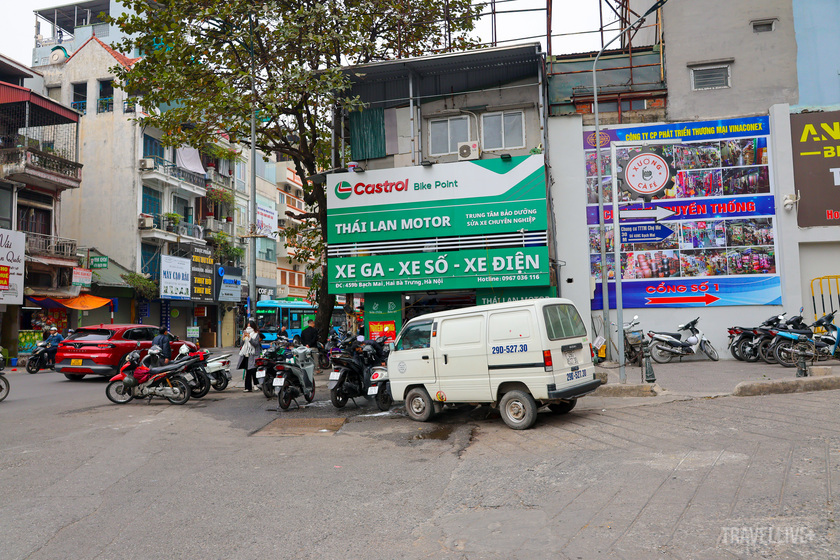

Located at the intersection of Bach Mai and Minh Khai streets, Mo Market is one of the oldest traditional markets in Hanoi.
Entering the basement market of Cho Mo Trade Center, customers can find everything from dried goods, clothes, fabrics, votive papers, to eye-catching aquarium stalls. However, the biggest attraction of Cho Mo is the diverse food court, which is especially bustling at noon.
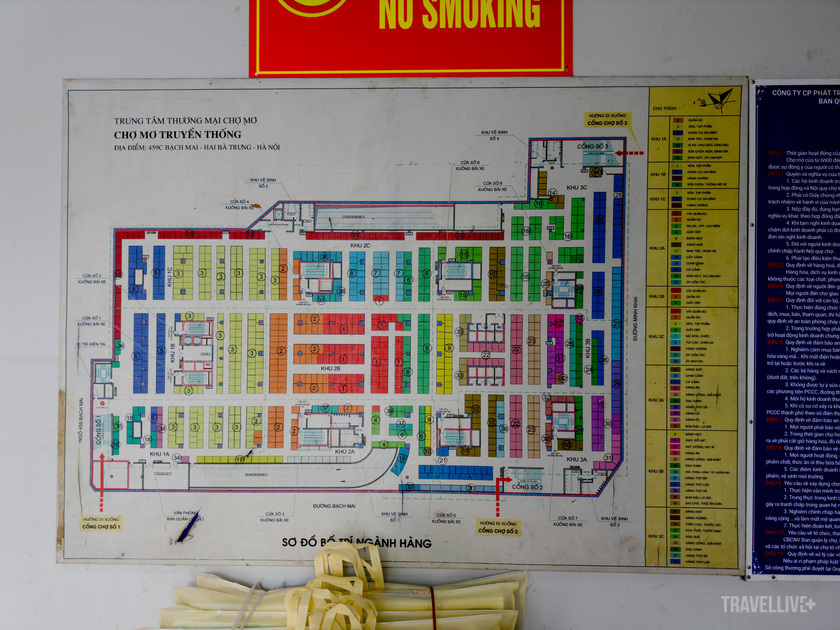
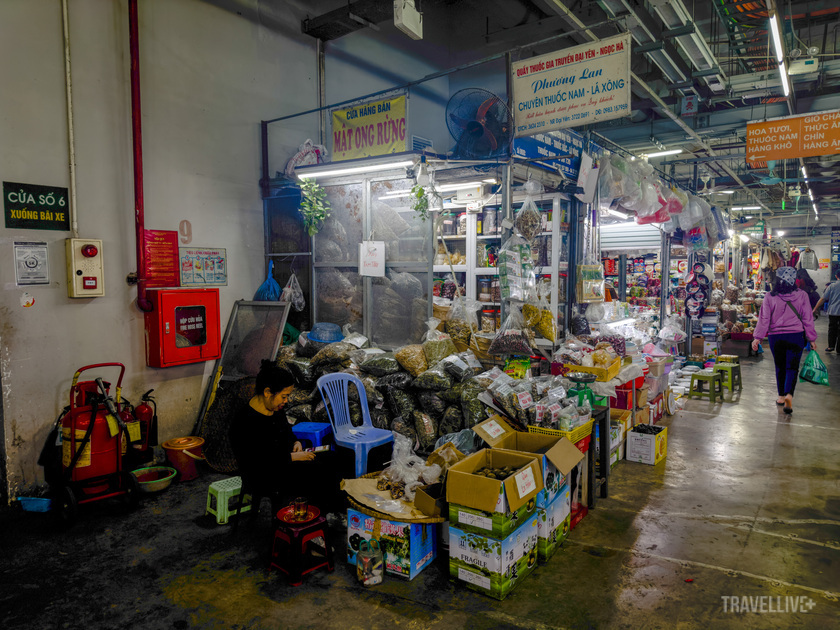

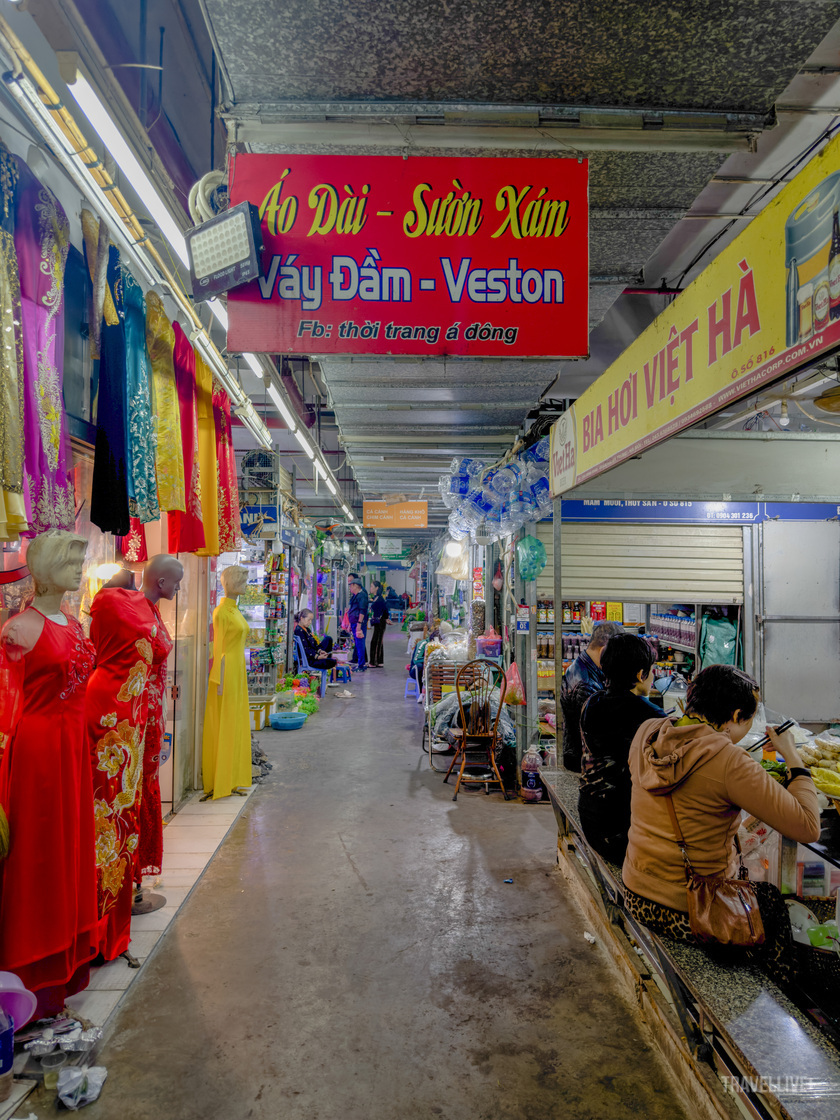
The basement market is diverse and full of all kinds of stalls.
Here, diners can enjoy many typical dishes of Hanoi such as vermicelli with shrimp paste, pho, vermicelli with crab soup, dried beef salad, and countless other attractive snacks. In the summer, cooling dishes such as sweet soup, mixed fruit, or tofu are popular. In the winter, the food court is more bustling with hot dishes such as hot rice cakes, sweet rice balls, and pillow cakes. The prices here are very reasonable, ranging from 10,000 - 40,000 VND/dish, suitable for the budget of workers, students, and office workers. It is this abundance and reasonable prices that have helped the Mo Market food court become a familiar destination for a quick and delicious lunch for people around the area.
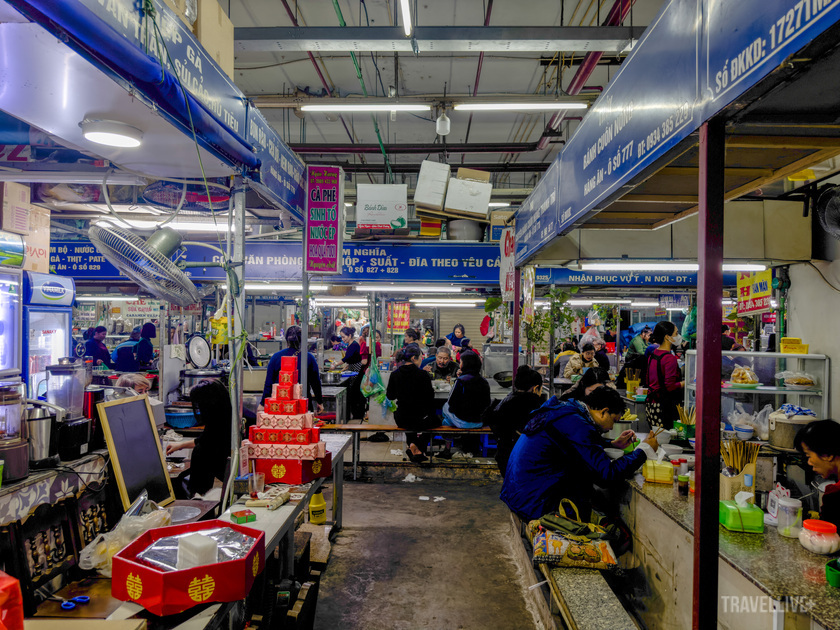
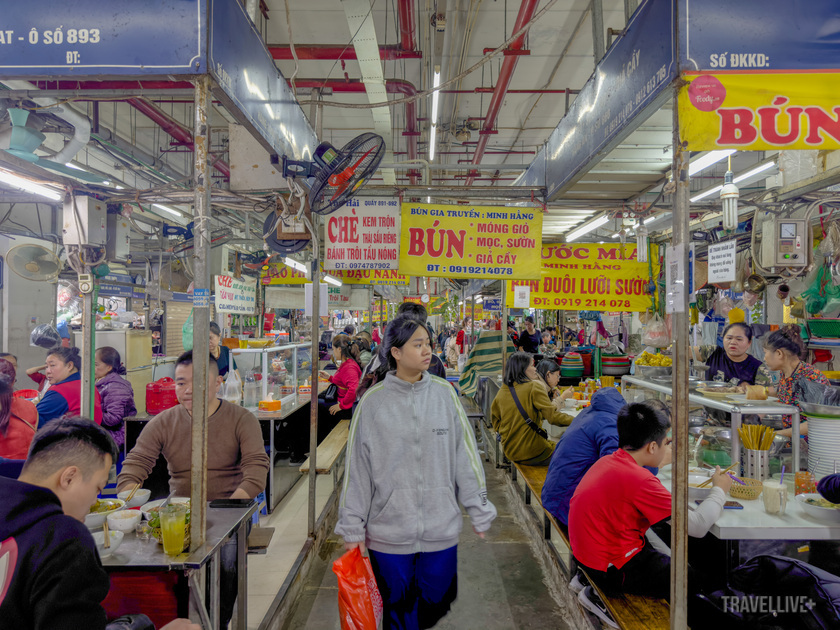
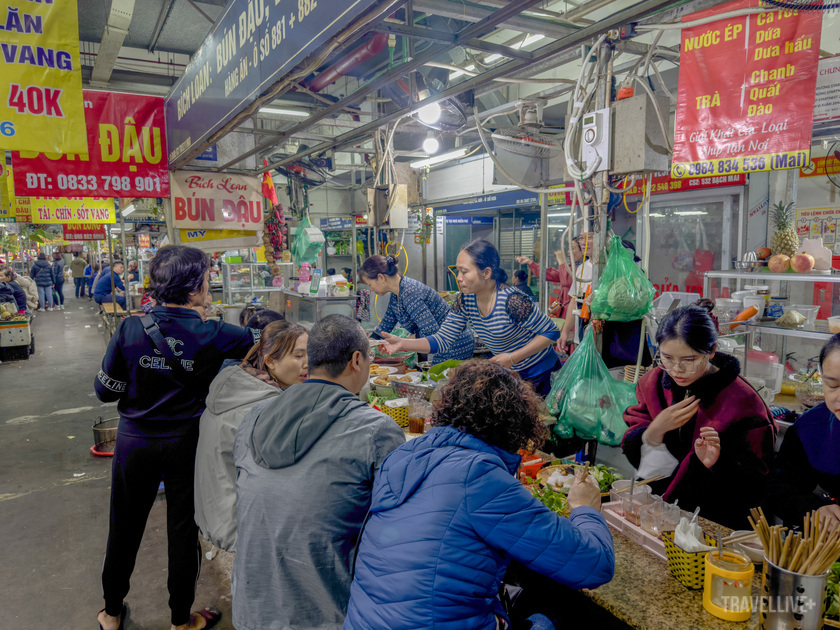
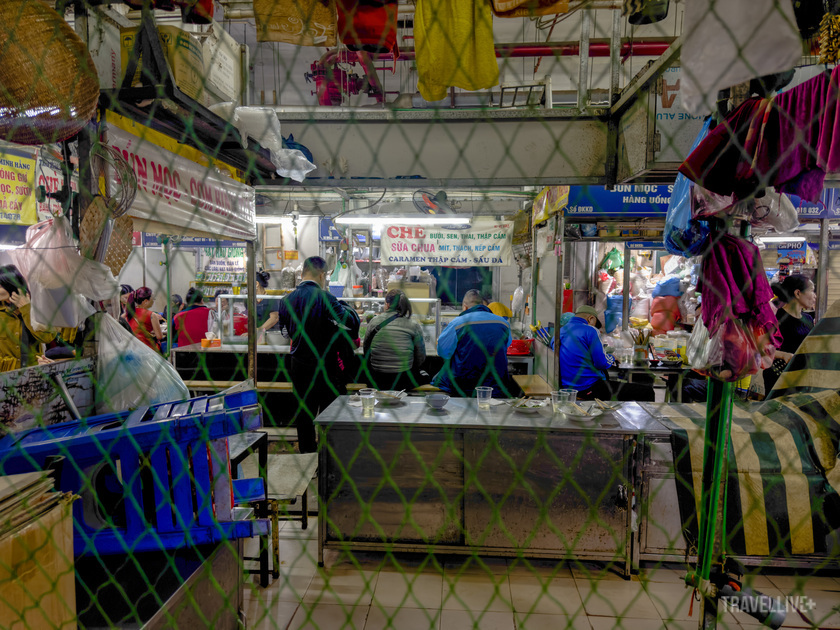
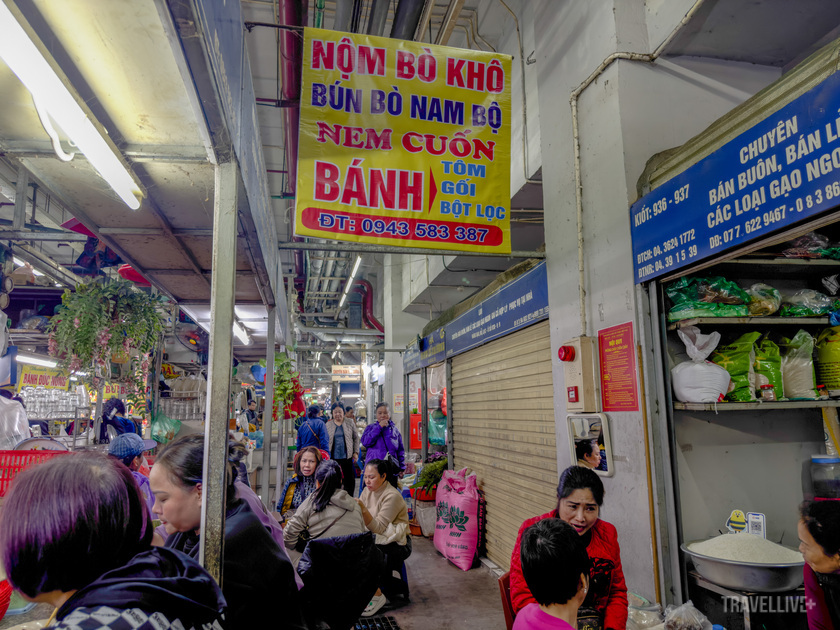
Although it has been operating stably, the move to the basement was initially a big challenge for traders and customers. “When we first moved to the basement, the market was deserted and desolate. At that time, we traders had to do business sparingly, with difficulty, and were not even used to the stuffy, dimly lit space,” a trader shared. Some people living around the area said that the market located in the basement was not suitable for daily shopping habits. “Sometimes we just need to buy a bunch of vegetables or eggs, but we have to park our vehicles and walk down to the basement, which is time-consuming and inconvenient,” a resident shared.
But over time, the scientific arrangement and improvement of facilities have helped the market become more airy, clean and bright. The stalls are neatly arranged, easy to find, with ventilation and hygiene systems that meet standards. Some regular customers commented that although the market atmosphere is not as crowded as before, the indoor space brings convenience, especially on the unpredictable rainy days of Hanoi. For office workers or guests working in the building, Mo Market is an ideal choice thanks to its convenient location and reasonable prices, suitable for budget and schedule.
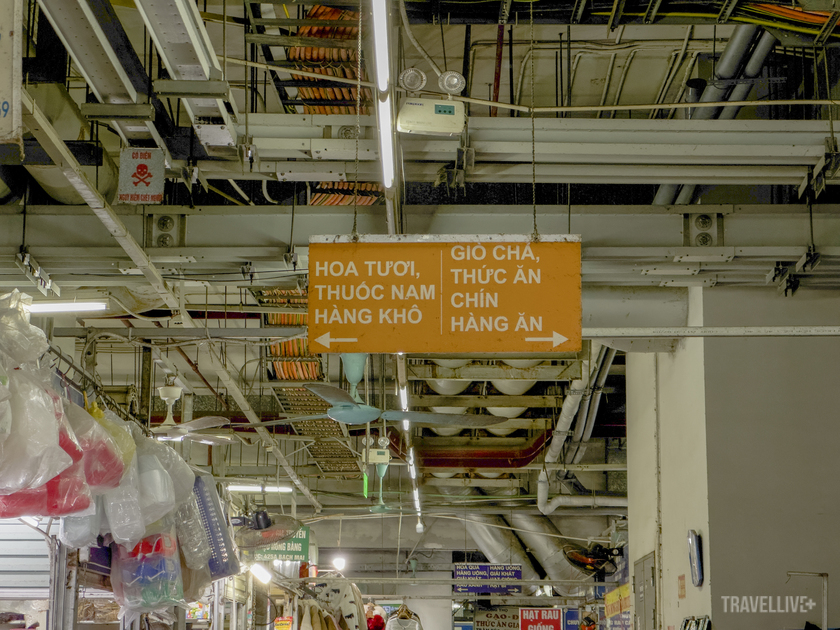
In the market, the most attractive area is the food court, where diners can spend only 50,000 VND and enjoy countless delicious dishes. You can start with Ms. Thiet's banh bot loc, only 20,000 VND for 5 pieces, an attractive choice that was sold out by around 12 noon due to the large number of take-out customers. Or try a full plate of vermicelli with tofu for only 30,000 VND, enough to fill your stomach but still fit your budget. In addition, sweet and cool chè for 25,000 VND or iced tea for only 3,000 VND are also great choices to quench your thirst.
According to Ms. Oanh, the owner of a grocery store in the market: "Business is now different from before, there are more and more products to meet the diverse needs of everyone." The rustic, affordable food combined with the hustle and bustle of the market has created an irresistible attraction, especially during peak hours like noon.
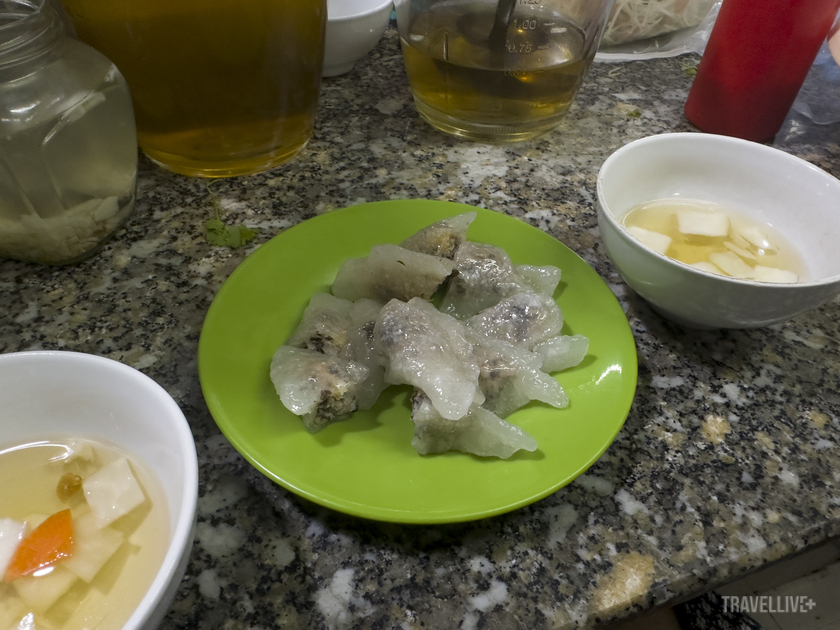
Ms. Thiet's banh bot loc costs 20,000 VND for 5 pieces
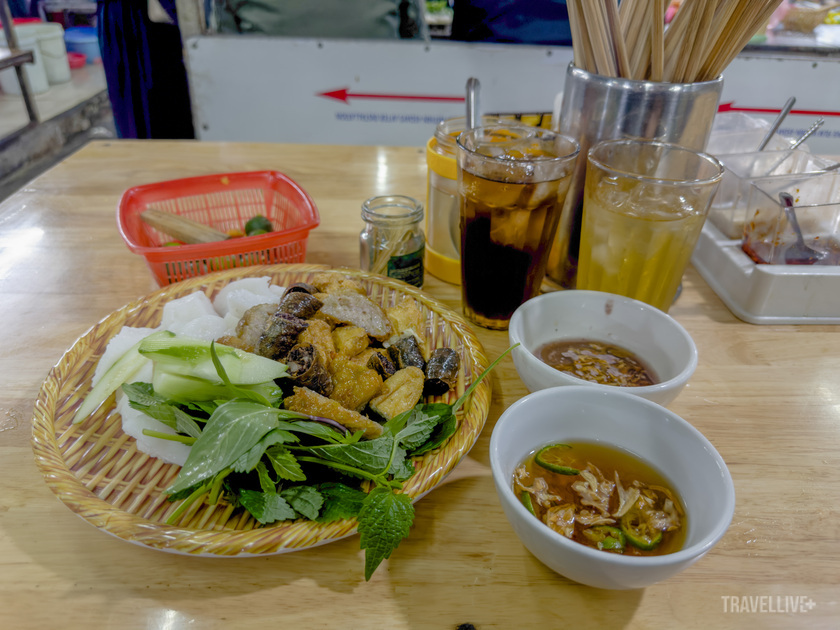
A full plate of vermicelli and fried tofu is only 30,000 VND
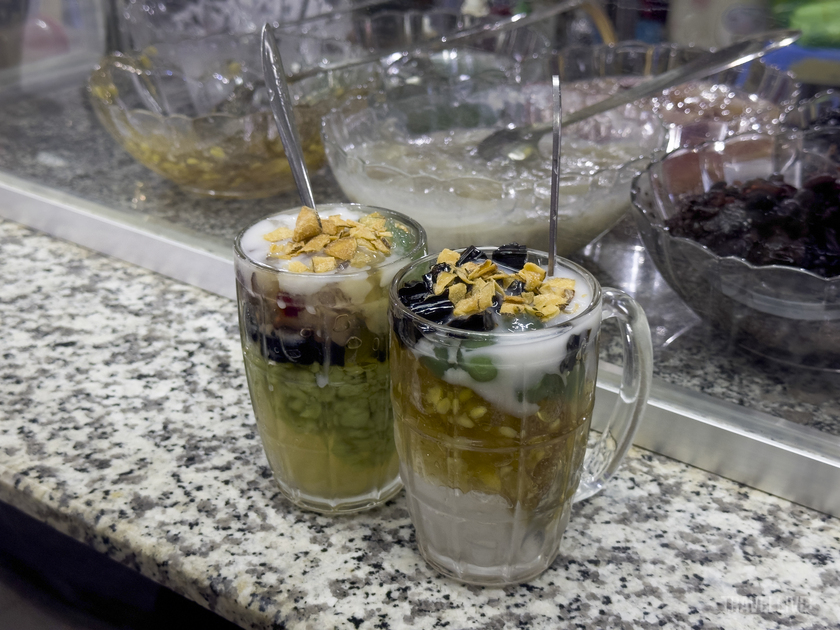
A cup of sweet tea costs 25,000 VND
After nearly a decade of operating in the basement, Mo Market has affirmed its special position in the lives of Hanoians. Although it is no longer an open-air market as before, it still retains the unique features of a long-standing traditional market, blending historical imprints and modern life. From a space associated with ancient roads such as Thien Ly or Kim Nguu River, Mo Market now has a new look but does not lose the cultural values that have been associated with the people of the capital for many generations. The diversity of goods and cuisine not only serves daily needs but also revives the characteristics of the old market culture in a completely new space.
Cho Mo is not only a shopping place, but also a place that reflects the flexible adaptation of traditional values in a modern context. Although jokingly called an “underground market”, this market still retains its vitality and charm, becoming an indispensable part of Hanoi’s life and culture.
Some other pictures at the market:

Bustling market, full of all kinds of goods and services
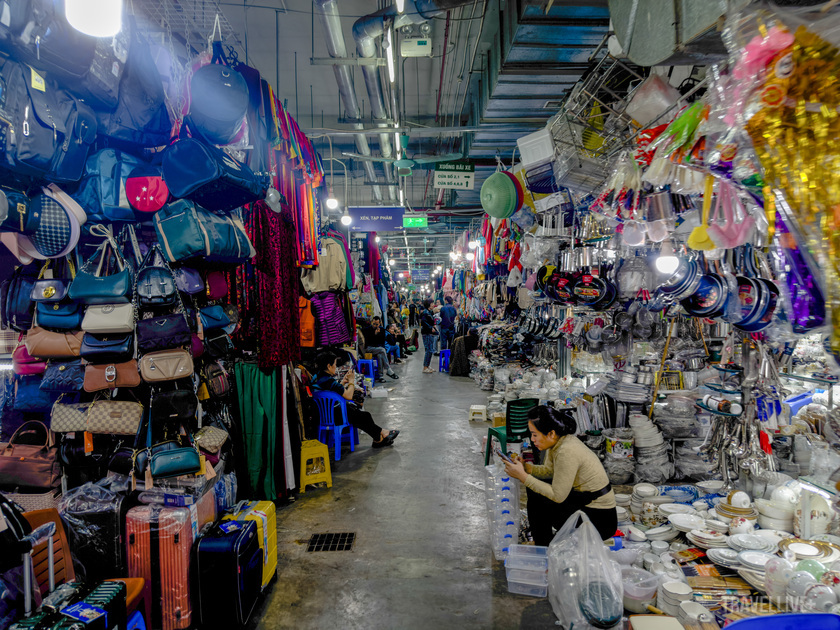
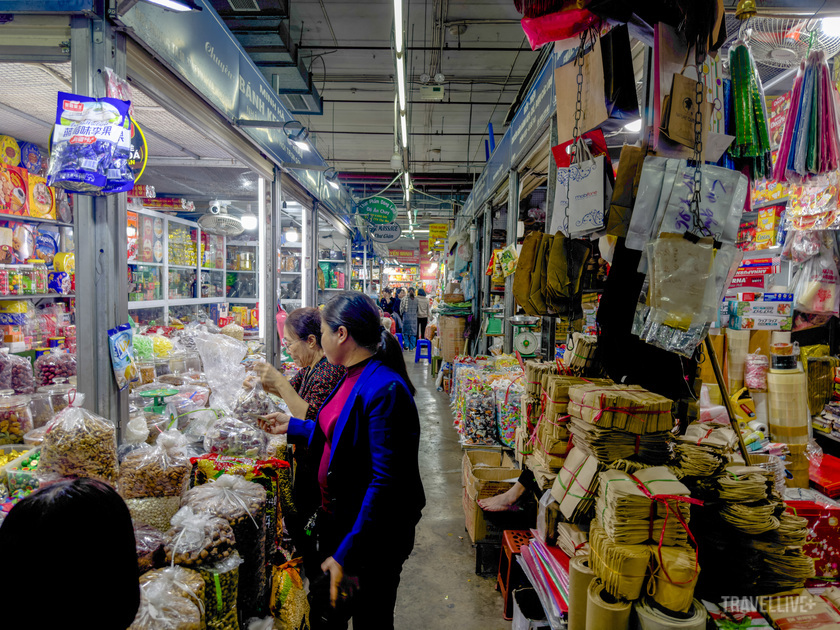


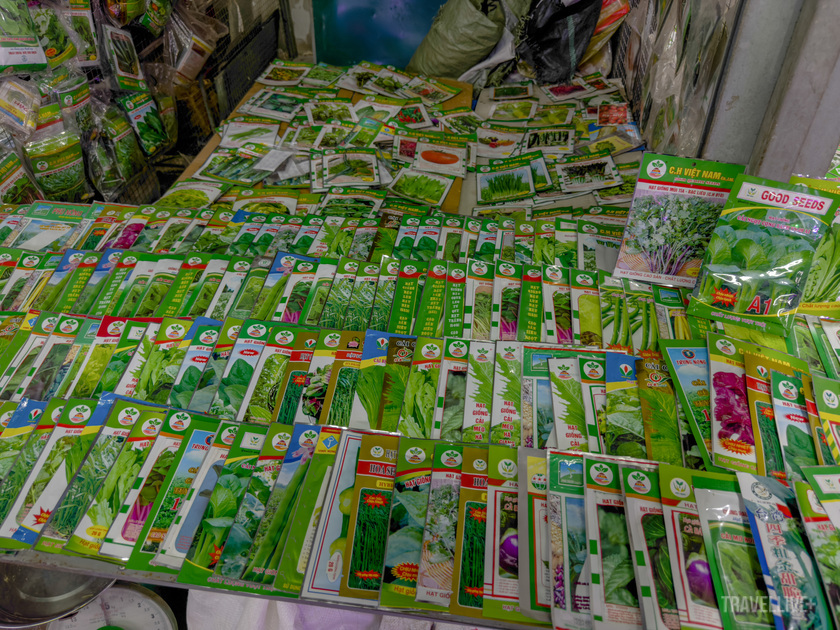
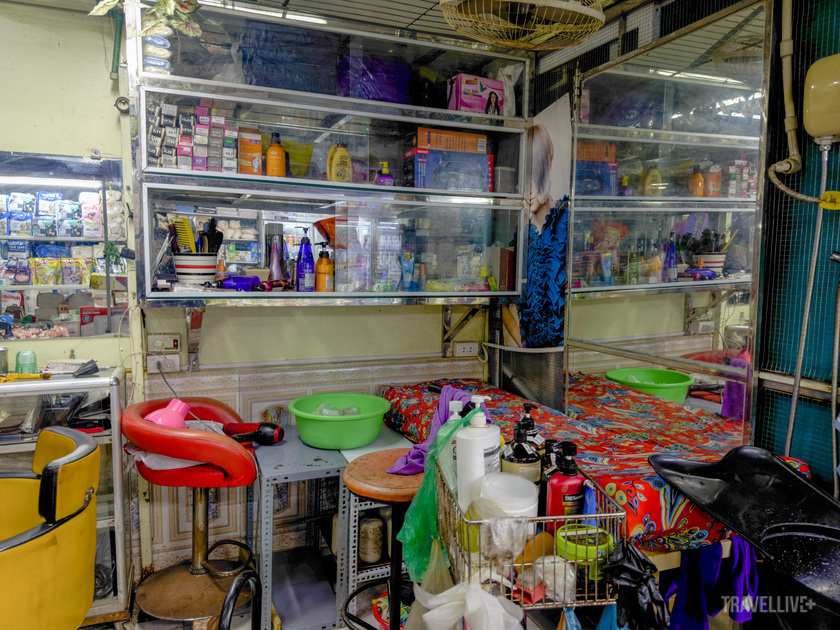
A small shampoo shop at Mo market area

Nail products, nail polish

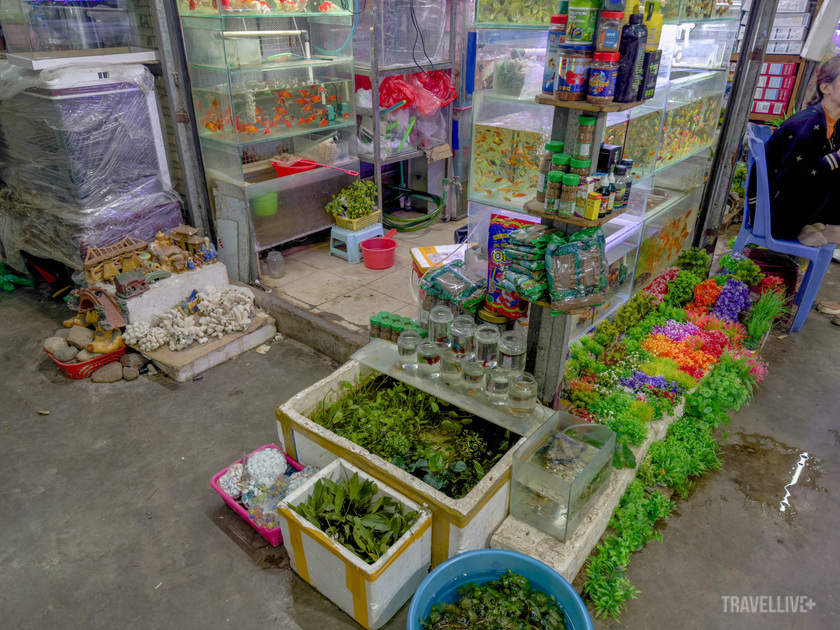
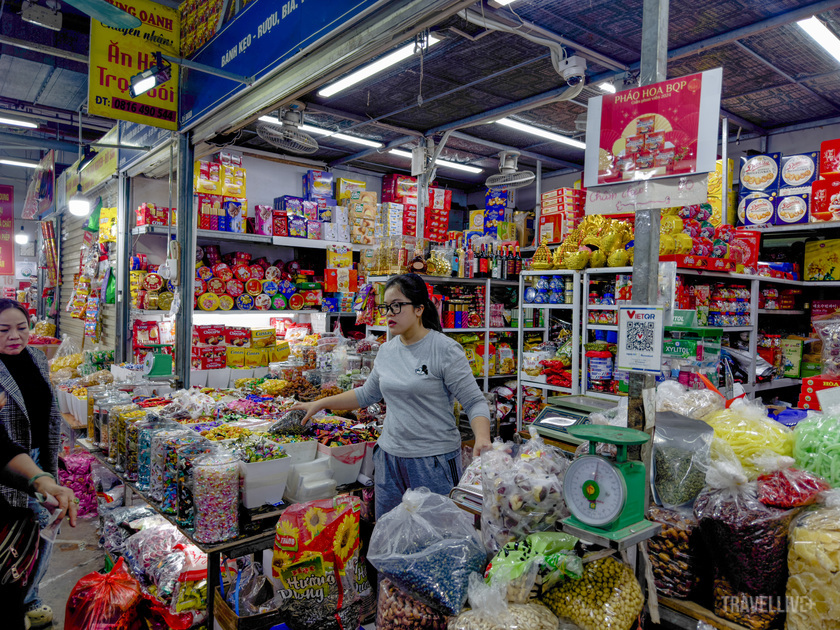
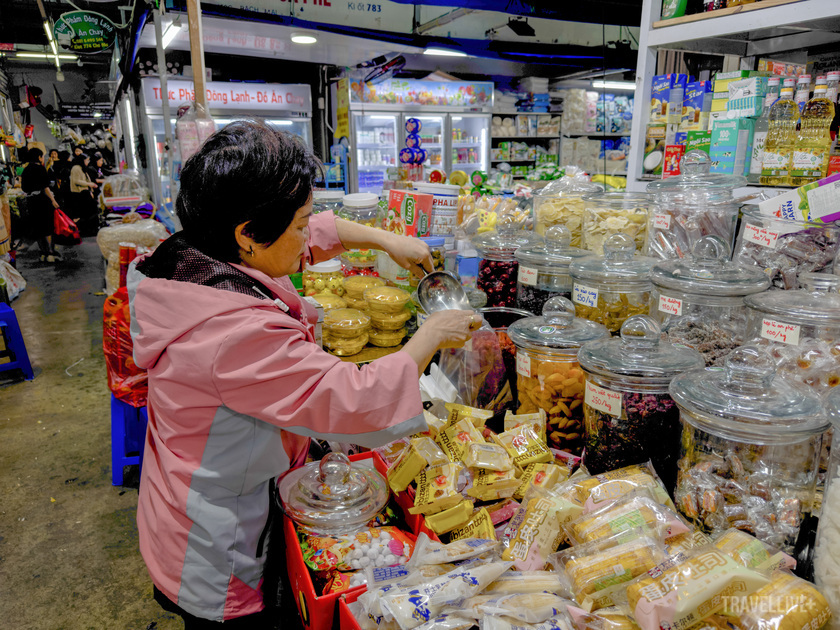
A pound of dried strawberries costs 30,000 VND.






